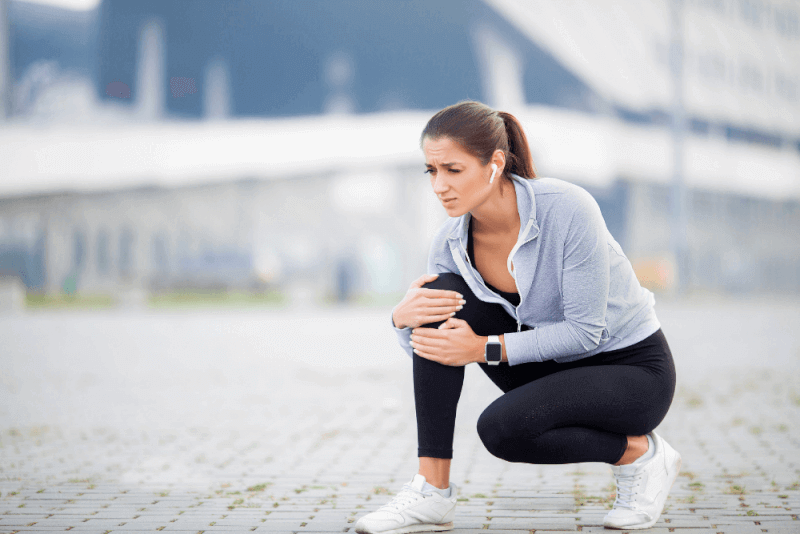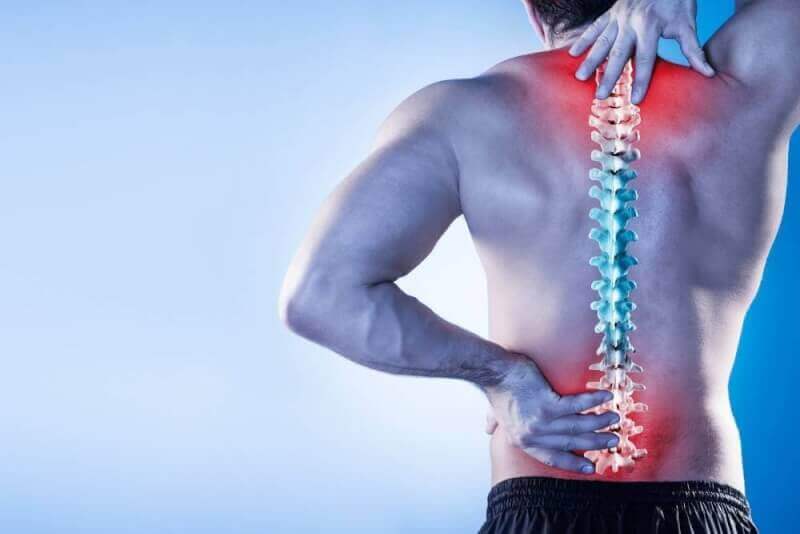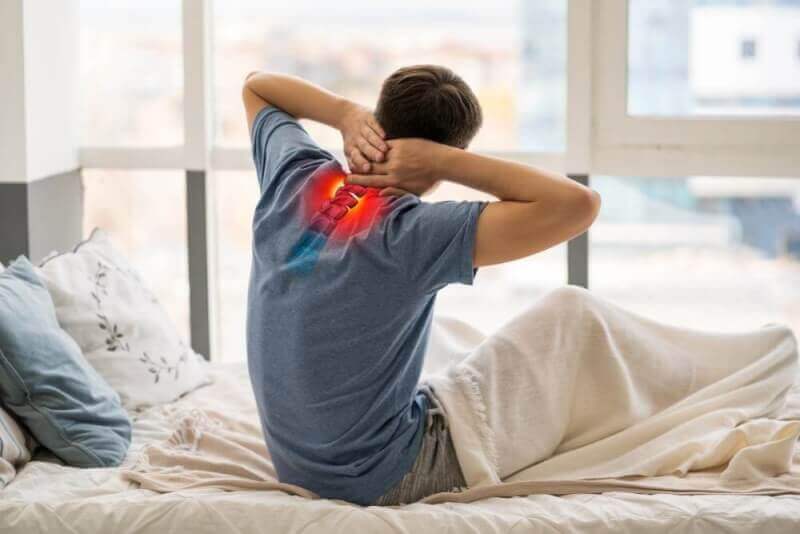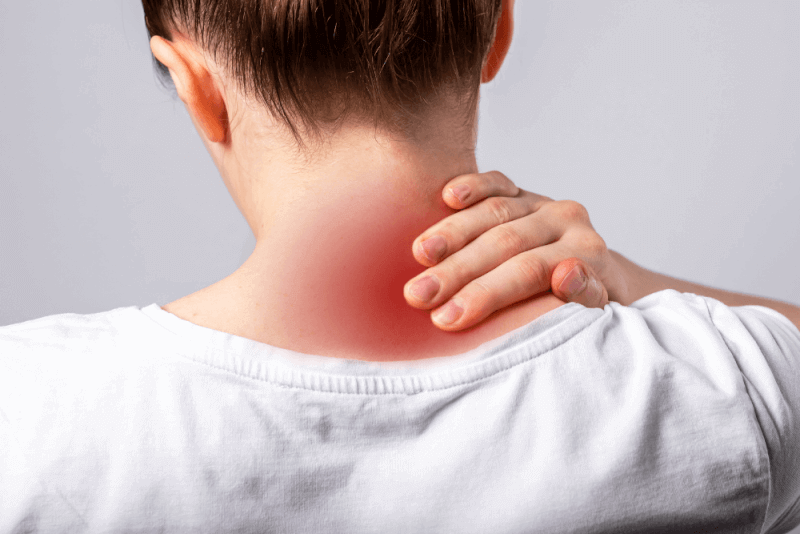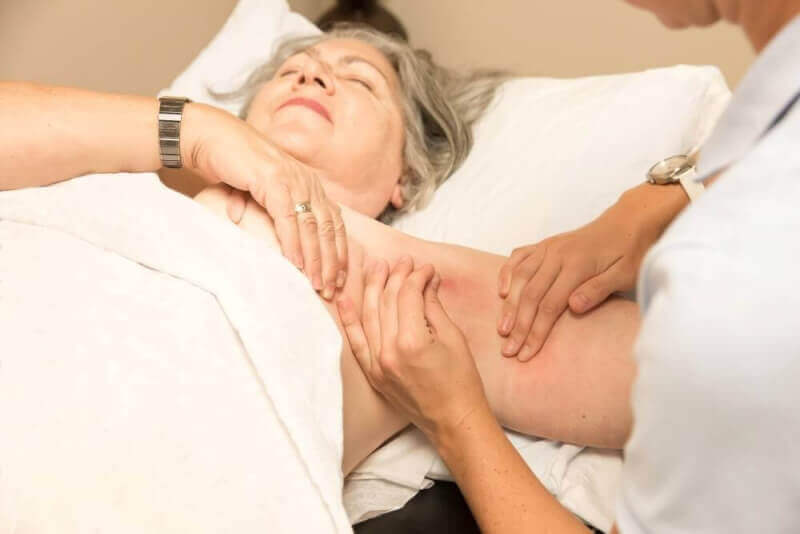30-Second Summary
- Approximately one-third of people over the age of 60 experience nighttime cramps. Nearly all individuals over the age of 50 have experienced nighttime cramps at least once in their lives. Additionally, 40% of women experience nighttime cramps during pregnancy.
- Cramps are a common condition during pregnancy. Especially in the early stages, cramps should not be a cause for concern. The rapid development of the baby can lead to cramps.
- Since cramps generally resolve on their own, medical intervention is usually not necessary. However, if there are underlying medical causes, procedures targeting the treatment of these causes should be followed.
- Cramps usually occur without any specific reason. However, in some cases, they may be a sign of an underlying health condition. Secondary cramps are often among the symptoms of serious health issues.
What Is a Cramp?
A cramp is the sudden and involuntary contraction of muscles in various parts of the body, which cannot be controlled. In a cramp situation, relaxation does not occur. Muscle cramps are normal and extremely common. It is possible for part or all of a muscle to contract. In some cases, several groups of muscles may contract together. A cramp can occur in any part of the body.
Types of Cramps
Cramps can occur in muscles located in various parts of the body. For this reason, there are many different subtypes.
Menstrual Cramps
Menstrual cramps, also known as dysmenorrhea, are throbbing cramps felt in the lower abdomen. A significant number of women experience this condition just before and during their menstrual periods.
Conditions such as endometriosis or uterine fibroids can cause menstrual cramps. Treating the cause helps reduce the pain. If caused by different conditions, the pain may decrease with age.
Nocturnal Cramps
Nocturnal cramps occur when people are not very active or while they are asleep. Cramps may cause people to wake up and make it difficult for them to fall asleep again. Night cramps can cause individuals to feel pain throughout the night. Their frequency varies from person to person.
Although nocturnal cramps can occur at any age, they are especially common in older adults. Approximately one-third of people over the age of 60 experience nocturnal cramps. Almost all people over the age of 50 have experienced nocturnal cramps at least once in their lives. In addition, 40% of women experience nocturnal cramps during pregnancy.
Hand and Foot Cramps
The contraction of muscles in the hand, thumb, foot, and toes is called hand and foot spasms. These contractions are usually short. However, they pass quickly and cause severe pain. The causes of cramps in the hands and feet are usually not obvious.
Leg Cramps
Leg cramps, which can last for seconds or minutes, are also involuntary muscle contractions. Leg cramps, which can affect sleep patterns, exercise routines, and overall quality of life, can be caused by certain medical conditions and medications. In addition, some risk factors can increase the frequency of cramps. When a cramp occurs, stretching the muscle, applying ice, and massage can help the muscle relax.
Stomach Cramps
The sudden, uncontrollable tightening of the stomach muscles is called a stomach cramp. While extremely uncomfortable, it can also be painful in some cases. This condition, which can occur in anyone, is usually not serious and does not require medical attention. However, if stomach cramps occur frequently and are severe, it may be a sign of a medical condition.
Cramp During Pregnancy
Cramps are a common condition during pregnancy. Especially in the early stages, cramps should not be a cause for concern. The rapid development of the baby can cause cramps. Cramps can last for a few minutes or hours and are generally similar to menstrual pains. Changing position or going to the toilet usually helps relieve this pain.
Pregnancy cramps can be felt in the abdomen, lower abdomen, lower back, or legs. The sensations experienced during pregnancy cramps include:
- Dull pain
- Sharp abdominal and vaginal pain
- Pulling and stretching pain
Causes of Pregnancy Cramps
The causes of cramps experienced during pregnancy include:
- Implantation cramps seen in the first trimester
- Cramps caused by uterine growth
- Constipation
- Gas accumulation
- False labor contractions (also known as Braxton Hicks contractions)
Causes of Cramps
The causes of cramps are generally not obvious. In most cases, they occur due to everyday factors such as fatigue. Additionally, the causes may vary depending on the area where the cramp occurs.
Menstrual Cramps
In regular menstrual cycles, the uterus contracts to shed the uterine lining. This contraction is triggered by hormone-like substances called prostaglandins. Therefore, high prostaglandin levels are associated with severe menstrual cramps. Common causes of menstrual cramps include:
- Endometriosis
- Uterine fibroids
- Adenomyosis
- Pelvic inflammatory disease
- Cervical stenosis
Nocturnal Cramps
Conditions that may cause this issue, also known as nocturnal leg cramps, include:
- Sitting for long periods
- Overuse of muscles
- Standing or working on concrete floors
- Poor posture during the day
- Kidney failure
- Diabetic nerve damage
- Mineral deficiencies
- Circulation problems
In addition, some medications may also cause night cramps. These medication groups include:
- Albuterol
- Clonazepam
- Gabapentin
- Pregabalin
- Zolpidem
- Fluoxetine
- Conjugated estrogens
- Diuretics
- Naproxen
- Statins
- Sertraline
- Celecoxib
- Chemotherapy drugs
Hand and Foot Cramps
Common causes of cramps in the hands and feet include:
- Abnormal levels of electrolytes or minerals in the body
- Parkinson's disease
- Multiple sclerosis
- Dystonia
- Huntington's disease
- Chronic kidney disease
- Being on dialysis
- Damage to a single or multiple nerves
- Dehydration
- Hyperventilation
- Muscle cramps
- Pregnancy
- Thyroid disorders
- Vitamin D deficiency
- Certain medications
Leg Cramps
Leg cramps may not always have a specific cause. However, common causes include:
- Involuntary nerve discharges
- Inadequate blood flow to some parts of the leg muscles
- Stress
- High-intensity exercise
Stomach Cramps
Common causes of stomach cramps include:
- Food poisoning (in addition to stomach cramps, symptoms may include nausea, vomiting, diarrhea, and fever)
- Stomach flu (may include watery diarrhea, stomach pain, nausea, vomiting, muscle pain, headache, and low fever along with cramps)
- Food allergies
- Food intolerance
- Irritable bowel syndrome
Symptoms of Cramps
Cramps can be felt mildly or be extremely severe. In mild cases, muscle twitching may be observed, while in severe cases, the muscle may appear to contract like a ball.
Pain may persist for several days after muscle spasms. If muscle spasms are of neurological origin, additional symptoms may include:
- Muscle pain
- Muscle weakness
- Paralysis
- Numbness
- Coordination problems
- Difficulty sleeping
- Vision problems
Menstrual Cramp
Symptoms of menstrual cramps include:
- Throbbing pain in the lower abdomen that can be severe
- Pain starting 1-3 days before menstruation, peaking within the first 24 hours, and gradually decreasing over 2-3 days
- Dull and continuous pain
- Pain radiating to the lower back and thighs
Additional symptoms may include:
- Nausea
- Loose stools
- Headache
- Dizziness
Nocturnal Cramps
Nocturnal cramps occur suddenly. These are mostly seen in the legs and cause the muscles to visibly harden from the outside. Pain may also be experienced. Common in adolescence, nocturnal cramps can cause anxiety in young people.
Hand and Foot Cramps
Besides stiffness and pain, other symptoms of hand and foot cramps include:
- Fatigue
- Muscle weakness
- Numbness
- Tingling
- Pins and needles sensation
- Twitching
- Uncontrolled and rapid movements
Leg Cramps
Leg cramps can feel like a muscle is tied in a knot. They can be extremely uncomfortable, painful, or even unbearable. After the cramp passes, pain in the area may persist for hours.
Diagnostic Criteria for Cramps
To diagnose cramps, necessary procedures are applied by considering the affected area and potential causes.
Menstrual Cramp
For the diagnosis of menstrual cramps, a physical examination is performed, including a pelvic exam. In addition, the following tests may be recommended:
- Ultrasound
- Other imaging tests
- Laparoscopy
Hand and Foot Cramps
If cramps are continuously seen in the hands and feet, it is necessary to consult a doctor. During the examination, the patient's medical history is reviewed, and a physical examination is conducted. In addition, blood and urine tests may also be required. These tests may include:
- Potassium, calcium, and magnesium levels
- Hormone levels
- Kidney function tests
- Vitamin D levels
- Nerve conduction and electromyography tests
Leg Cramps
To diagnose leg cramps, the patient's medical history, current medications, and stress factors should be evaluated. Patients should be specific when describing their condition. It is necessary to explain when the cramps began, how they felt, how long they lasted, and whether there were any other symptoms.
Then, routine tests may be requested to check vital signs. In this way, health problems that may cause leg cramps can be diagnosed.
Treatment Methods for Cramps
Since cramps usually resolve on their own, no medical intervention is generally needed. However, if there are underlying medical causes, the procedures for treating those causes should be followed. Additionally, there are simple methods that can be applied to help relieve pain and accelerate recovery.
Menstrual Cramps
To alleviate menstrual cramps, specialists recommend the following:
- Painkillers
- Hormonal birth control
- Surgery
In addition, regular exercise, applying heat, using dietary supplements, and reducing stress can help relieve menstrual pain.
Hand and Foot Cramps
Treatment for hand and foot cramps varies depending on the cause. If dehydration is the cause, increased fluid intake may be sufficient. Additionally, some medications and vitamins can also be helpful.
Leg Cramps
When leg cramps occur, immediate action is needed since they often cause severe pain. The following steps can help relieve the pain:
- Stretching
- Massage
- Standing up
- Walking
- Applying heat
- Applying cold
- Using painkillers
- Raising the leg above heart level
The following groups of medications can also be used to reduce the frequency of cramps:
- Muscle relaxants
- Calcium channel blockers
- Magnesium
- Nerve pain medications
- Vitamin B complex
What Diseases Are Cramps a Symptom Of?
Cramps usually occur without any apparent reason. However, in some cases, they can be a sign of another health condition. Secondary cramps are often among the symptoms of serious health problems. The health issues in which cramps may appear as a symptom include:
- ALS
- Congestive heart failure
- Liver cirrhosis
- Diabetes
- Flat feet
- Hypokalemia
- Kidney failure
- Osteoarthritis
- Parkinson’s disease
- Peripheral artery disease
- Peripheral neuropathy
Where Do Cramps Occur?
Cramps can occur in many parts of the body. The most common ones are muscle cramps. The areas where muscle cramps are most frequently seen include:
- Back
- Arm
- Leg
- Neck
- Chest
- Abdomen
- Ribs
Which Vitamin Deficiencies Cause Cramps?
Most cramps occur due to unknown causes. However, they are generally associated with factors like exercise, overuse of muscles, strain, or diet. Additionally, muscle cramps may occur due to the deficiency of certain vitamins.
Magnesium
Magnesium is a mineral required by the body to regulate the health of nearly every organ. It supports normal body functions such as blood pressure, blood sugar control, bone health, and nerve function. Magnesium deficiency is known as hypomagnesemia.
What to Do During a Cramp?
What needs to be done during a cramp varies depending on the area where the cramp occurs. The methods suitable for muscle cramps may not be suitable for stomach cramps.
Muscle Cramps
In muscle cramps, the affected muscle group should first be gently stretched. In leg cramps, pulling the toes backward can help stretch the muscles.
After stretching the muscle, gently massaging it can also help it relax. Care should be taken not to apply too much pressure while massaging.
Finally, putting weight on the cramped leg can also help relieve the cramp.
Menstrual Cramps
The following methods can be used to relieve menstrual cramps:
- Engaging in physical activity, including sexual activity
- Taking a hot bath or applying a hot water bottle to the lower abdomen
- Taking supplements like vitamin E, omega-3 fatty acids, vitamin B6, and magnesium
- Reducing stress
Stomach Cramps
The following methods may help alleviate the pain and cramping caused by stomach cramps:
- Applying a hot water bottle to the abdomen
- Taking a hot bath
- Drinking plenty of water
- Avoiding coffee, tea, and alcohol
- Eating light foods such as bananas, rice, and crackers at the beginning of meals
- Getting plenty of rest
- Using paracetamol
What Helps Relieve Cramps?
If cramps become persistent, it's important to first investigate whether there's an underlying health problem. If no underlying issue is found, the following methods and foods may help reduce the frequency and severity of cramps.
Muscle Cramps
To reduce the severity of muscle cramps, it is recommended to consume foods and beverages rich in magnesium, potassium, sodium, and calcium. These minerals are also known as electrolytes. Foods rich in these minerals include:
Banana
Bananas are rich not only in potassium but also in calcium and magnesium, making them an excellent food for relieving muscle cramps.
Sweet Potato
Sweet potatoes also contain calcium, potassium, and magnesium. They contain six times more calcium than bananas. In addition to sweet potatoes, regular potatoes and pumpkins are also effective against cramps.
Avocado
Avocados contain twice as much potassium as bananas and sweet potatoes. Potassium helps muscles function properly and also supports heart health.
Beans and Lentils
Beans and lentils are high in magnesium. Their fiber content also helps control blood sugar and ease menstrual cramps.
Melon
Melons contain all the essential minerals for relieving cramps and are also high in water content, making them effective in treating muscle cramps. Especially recommended after workouts.
Watermelon
Although watermelon is not as high in potassium as melon, its high water content helps support hydration, making it beneficial against cramps.
Milk
Milk is a natural source of electrolytes and is highly beneficial for hydration. It is also rich in protein, which helps repair muscles after workouts.
Pickle Juice
Pickle juice is one of the fastest-acting remedies for muscle cramps, especially popular among athletes. Its high water and sodium content help interrupt the nerve reaction that causes cramps.
Dark Leafy Greens
Rich in calcium and magnesium, these foods help relieve both muscle and menstrual cramps.
Orange Juice
Orange juice is good for hydration and also contains high levels of potassium, along with calcium and magnesium.
Nuts
Nuts, especially seeds and almonds, are rich in magnesium and also contain calcium, making them beneficial for relieving cramps.
Salmon
Salmon is recommended for cramps caused by poor blood circulation. It contains high levels of sodium and magnesium.
Menstrual Cramps
To reduce menstrual cramps during the menstrual period, it's important to reduce inflammation in the body or support the prostaglandin hormone. Helpful foods include:
- Nuts
- Bananas
- Salmon
Foods to avoid include:
- Processed products
- Foods containing high fructose syrup
- Red meat


